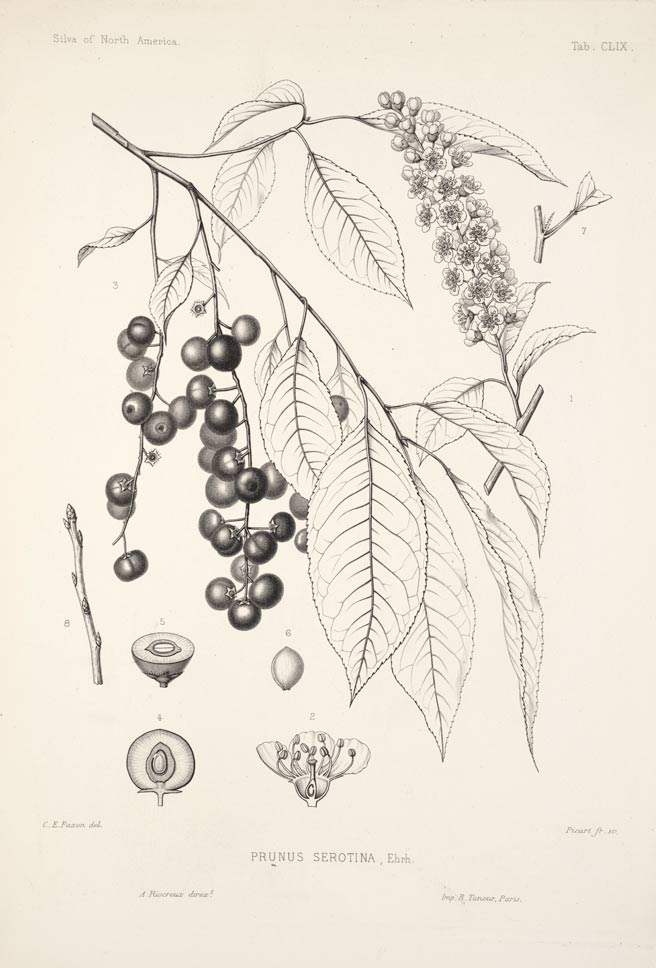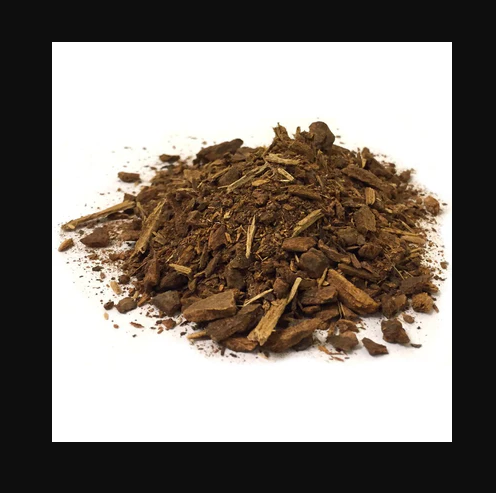wild cherry bark cut & sifted
wild cherry bark cut & sifted
Couldn't load pickup availability
wild cherry bark
Prunus serotina
Wild cherry, also known as black cherry, sweet cherry and Virginian prune, is a species of flowering tree that is naturally distributed throughout eastern North America. Because the tree produces lovely pink clusters of flowers in spring and an edible stone fruit in summer, it is also popular in cultivation for food and landscaping. Wild cherry bark is also harvested for use in smoking meats and fish.
Wild cherry bark benefits lung and respiratory health, and acts as a soothing cough suppressant when used in syrups, throat lozenges, and wild cherry bark tea.
a bit of botany
a little botanical information on the wild cherry tree
description
Prunus serotina is a flowering tree in the Rosaceae family.
Wild cherry as the plant is commonly known, is one of the largest of the cherries and will typically reach heights of 50-80 feet—and less frequently even to 100 feet. It is graced with a narrow-columnar to rounded crown. The narrow glossy green leaves are oblong-ovate to lanceolate (to 5” long); they have acuminate tips and serrate margins.
Its spring bloom is profuse; it has attractive summer foliage; and striking fall color. In the spring (roughly late April-May), fragrant white flowers appear along with the foliage in slender pendulous clusters (with racemes to 6” long). The tree's flowers are followed by drooping clusters of small red cherries (up to 3/8 inch in diameter). These ripen in late summer when they will turn dark purple-black.
The tree's green foliage will turn to attractive shades of yellow and rose in fall. Mature trees develop dark scaly bark. Seed production will begin at about 10 years of age, but does not become heavy until 30 years. This production can continue up to 100 years.
common names & nomenclature
Specific epithet serotina is derived from the Latin word for “late”. This moniker is in reference to this cherry tree's late flowering and fruiting in comparison to other cherries.
Also known as:
wild cherry bark, virginia prune bark, wild cherry, black cherry, sweet cherry, mountain black cherry
the rest of the story
Formulas & Recipes
What is wild cherry bark tea good for?
In foods and beverages, wild cherry is used as a flavoring agent. Some people eat the seeds as snacks. The fruit of wild cherry is eaten fresh, in jams, or used in liquors or syrups. Using wild cherry bark at home is easy, but it must be handled with care. Unlike other hard materials that need to be decocted, or simmered in boiling water, wild cherry bark must be allowed to steep in hot water and never boiled, or the active compounds in the bark will be lost.
Wild cherry bark tea
- Grind dried wild cherry bark coarsely.
- Add to a tea ball and steep in just boiled water.
- Cover for 8-10 minutes.
- Sweeten with honey to taste.
Wild cherry bark syrup uses
Wild cherry syrup is traditionally taken for relief of occasional cough, colds, and lung and respiratory health support. It can also be used to help alleviate symptoms of diarrhea and digestive disorders. It is used in cough syrups because of its soothing, sedative, expectorant, and drying benefits.
Wild cherry bark cough syrup recipe
One of the best ways to preserve wild cherry bark is to make a simple syrup, which will last indefinitely if properly stored. To make wild cherry syrup the easy way, just fill a mason jar 2/3 of the way with bark and cover with brandy. After 30-45 days, strain and blend with reserved liquid with an equal amount of honey and bottle.
How to make wild cherry bark tincture.
- Place the wild cherry bark in clean container with a good seal
- Pour vodka about 1 inch over the top of the wild cherry bark
- Seal and allow to sit in a cool dark place for a couple months
- When it reaches your preferred intensity, filter out the wild cherry bark
Share


